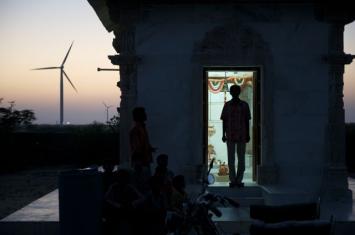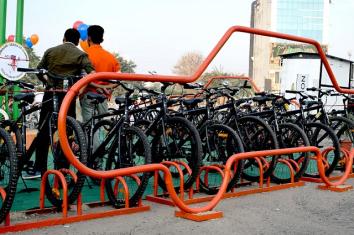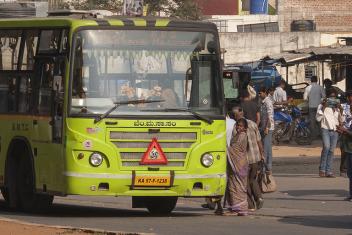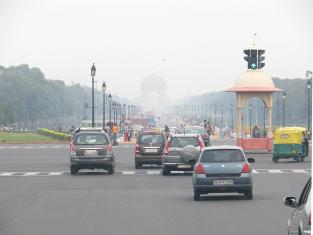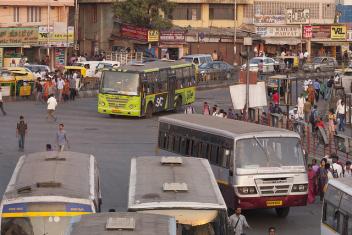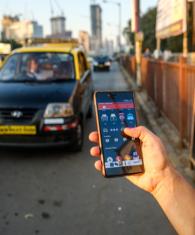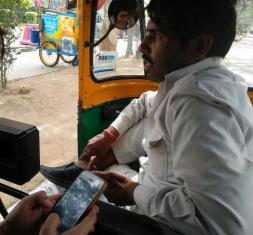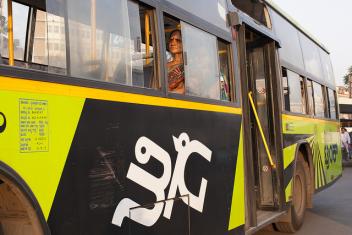Blogs
The blogs are part of WRI India’s mission to provide unbiased, expert analysis on the most important environmental issues facing the world today.
In today’s rapid-fire, fragmented information culture, we hope these insights will provide a measure of clarity to decision-makers worldwide.
-
-
Swapping Parking Spots for Bike Lots can Transform India’s Cities
by e -This blog post originally appeared on Insights.
One city in India is swapping its cars for bikes.
WRI India and Nagarro Software, in partnership with Udaan NGO and NASSCOM Foundation, recently launched the Seeds for Change project in Gurugram, India, reclaiming four car parking spots to make space for 40 bicycles. The...
-
Higher Fares, Poorer Services: The Impact of High Taxation on Public Buses in India
by -If you’re a user of public transport in India, you’re statistically most likely to take the bus. A recent National Sample Survey Office report indicated that buses are the most frequently cited mode of transport across both rural and urban areas, with close to two-thirds of respondents reporting travel by bus. In smaller towns and cities with minimal suburban rail facilities, buses serve as the sole mode of formal public transport, and even in Delhi – which has an excellent metro rail...
-
COP 22: From Agreement to Action
by e -While COP21 in Paris in December 2015 was a fast-paced landmark agreement, COP22 in Marrakech in November 2016 was more nuanced and difficult to follow, even for those on the ground. The Paris Agreement, entered into force on 04 November 2016, demonstrated concerted political support for climate action. However, in the weeks and months following COP22, the impact of the results of the US elections left people wondering if Marrakech had helped in taking the spirit of Paris forward, or had it begun to fizzle out?
While...
-
Can Carpool Reduce Emissions and Congestion in Indian Cities?
by e -In response to the burgeoning problem of air pollution, cities around the world have identified motor vehicles as a significant contributor to poor air quality. To address this issue, cities are piloting measures to shift people to public transport and restrict single occupancy vehicles in urban centers. For example, several trials have been launched in Paris since December 2016, ranging from a move to make public transport...
-
Financing: The Next Step in Facilitating Transit-Oriented Development
by e -India's urban population is expected to reach 600 million by 2031. Providing infrastructure to accommodate this growth will be a huge task. The Ministry of Urban Development (MoUD) is encouraging Transit-Oriented Development (TOD) as one of its strategies for sustainable urban growth. There has been increased interest in India for scaling-up TOD projects in order to...
-
On-demand Buses in India: Opportunities and Challenges in Implementation
by -Imagine hailing a bus through a smartphone application in India for that daily commute from home to college or work.
On-demand transportation leverages technology to connect a bus in the vicinity with a passenger looking to travel in the same direction This implies following a demand responsive route to a pre-determined destination, finding passengers along the way. In contrast, conventional public buses ply along fixed corridors in a city, expecting to be found by commuters.
Convenient pick up aside, on-demand buses provide their passengers the assurance of seating for the...
-
Regulating New Mobility II: The Changing Framework of Motor Vehicle Regulations in India and its Impact
by e -On November 8, 2016, WRI India Sustainable Cities and Zehn Legal hosted part two of a two-part webinar series on the applicability of regulatory frameworks governing motor vehicles for on-demand taxi aggregators and other shared mobility enterprises in India. Part one of the series focused specifically on the Motor Vehicles Act of 1988 and...
-
Regulating New Mobility I: What does India’s Motor Vehicles Act mean for shared mobility enterprises?
by e -The Motor Vehicles Act of 1988 is the principal act of the Parliament of India that governs and regulates the road transport ecosystem in the country. It was enforced in June 1989 and is the go-to legislation for the granting of permits, registration of motor vehicles, licensing of drivers and conductors, insurance, liability, offences and penalties, and so on.
Over the last few years, many new business models have emerged that allow commuters to summon mobility options using services built on technology and innovative business models. However, the legality of these models are...
-
Building a Smooth Road Map for City Bus Systems in India
by -City buses, plying on both long and short distance routes, are the primary mode of transport for majority Indians, with over 25 billion trips recorded in 2014-15. The most vulnerable sections of society depend on buses as one of the cheapest and the most convenient means of commute, in small, medium and metro cities alike. Unfortunately, despite being the backbone of urban mobility, bus penetration in India is dismal. There are 1.29 buses per 1000 people in India, compared to China’s 1.89 and UK’s 2.77, and less than a fifth of Brazil’s 10.3, as of 2009 (Bus Karo 2.0 – Case Studies from...

